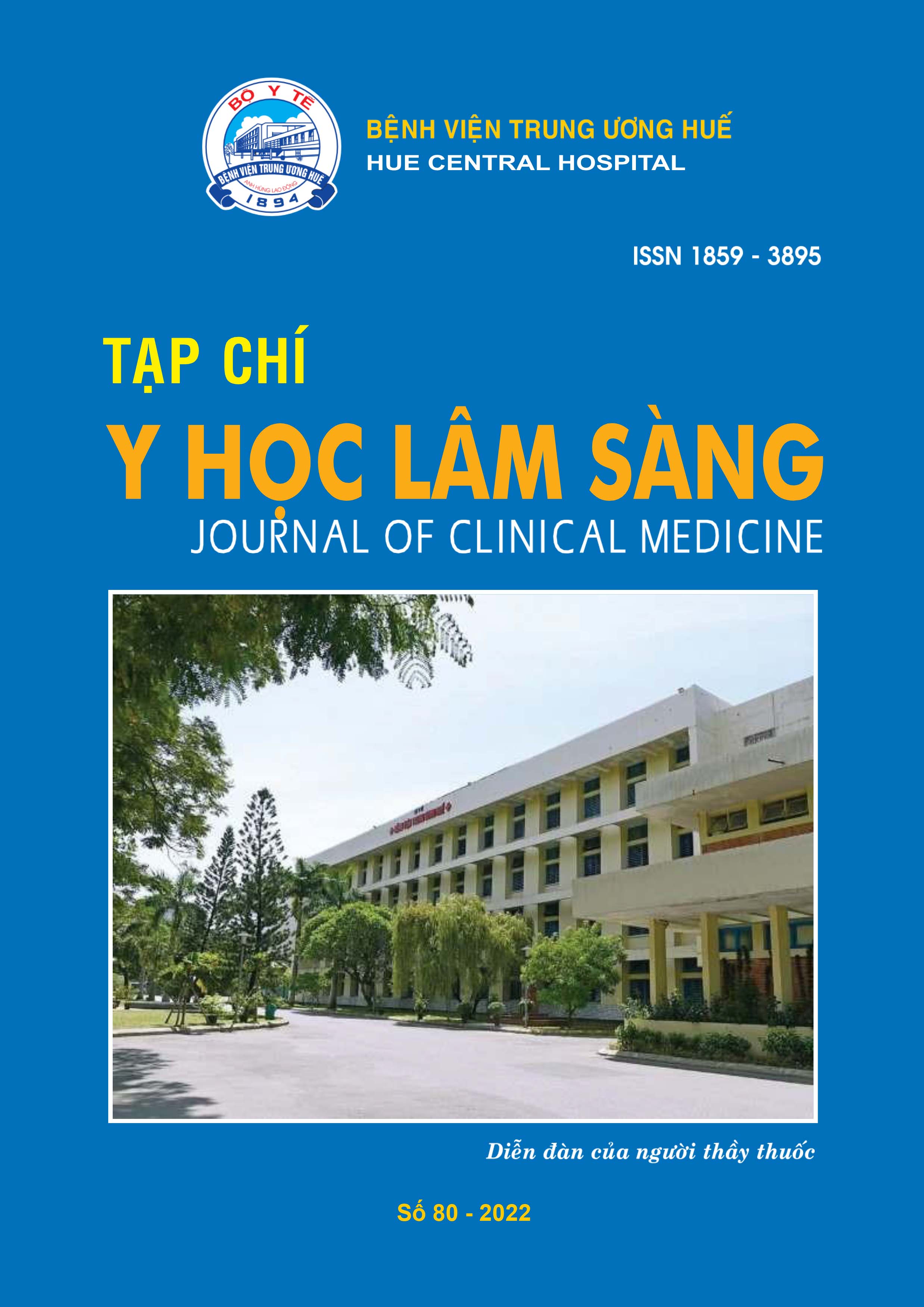Abstract
Background: Stroke is one of the leading causes of death and disability. Pneumonia complications during treatment are related to many factors in which dysphagia play a major role. Evaluation of dysphagia, monitoring and swallowing rehabilitation measures are essential steps in nursing care in patients with severe stroke. This study explore the dysphagia in patients with severe acute stroke and its correlation with pneumonia at the Stroke center of Hue Central Hospital.
Methods: A cross - sectional study with longitudinal follow - up of 122 patients diagnosed with cerebral infarction, cerebral hemorrhage or subarachnoid hemorrhage admitted to a stroke center, Hue Central Hospital. From January 2022 to April 2022.
Results: 122 patients with severe acute stroke with a Glasgow score of 5 - 11 and having a dysphagia within 24 hours of admission, the mean age was 57,61 ± 13,75. 19% of patients improved completely swallowing functions by day 14 after stroke, this group of patients had a pneumonia rate of 9,5%. In the group that improved swallowing function with varying degrees but not completely, there was a 27,7% rate of pneumonia. The risk of pneumonia in the group without dysphagia was lower and only 0,24 times compared with the group with dysphagia (95% confidence interval: 0,05 - 1,1), statistically significant difference.
Conclusion: In addition to the patient’s natural recovery after severe stroke, assessment of dysphagia for care, rehabilitation exercises to improve swallowing function has great significance in preventing and reducing the incidence of pneumonia during the first 2 weeks after severe stroke.
References
Hinchey JA, Shephard T, Furie K, Smith D, Wang D, Tonn S. Formal dysphagia screening protocols prevent pneumonia. Stroke. 2005;36:1972-1976.
Đinh Thị Hoa, Mạc Doanh Thịnh. Khảo sát tình trạng rối loạn nuốt ở bệnh nhân đột quỵ giai đoạn cấp tại khoa thần kinh bệnh viện đa khoa tỉnh Hải Dương. Tạp chí Y học Việt Nam. 2021;502.
Nguyễn Thị Dung, Bước đầu tìm hiểu rối loạn nuốt và nhu cầu can thiệp phục hồi chức năng nuốt ở bệnh nhân tai biến mạch máu não: Luận văn bác sỹ nội trú chuyên ngành Phục hồi chức năng/Nguyễn Thị Dung. 2014, ĐHYHN.
Lê Văn Thính, Sa sút trí tuệ nguyên nhân mạch máu: vai trò của tai biến nhồi máu não, in Tai biến mạch máu não hướng dẫn chẩn đoán và xử trí. 2007, Nhà xuất bản Y học, Hà Nội.
Phan Nhựt Trí, Nghiên cứu rối loạn nuốt ở bệnh nhân tai biến mạch não cấp tại Bệnh Viện Cà Mau năm 2010, in Luận văn Bác sỹ chuyên khoa cấp II. 2011, Đại học y Hà Nội.
Kidd D, Lawson J, Nesbitt R, MacMahon J. Aspiration in acute stroke: a clinical study with videofluoroscopy. QJM: An International Journal of Medicine. 1993;86:825-829.
Shaker R, Easterling C, Kern M, Nitschke T, Massey B, Daniels S, et al. Rehabilitation of swallowing by exercise in tube-fed patients with pharyngeal dysphagia secondary to abnormal UES opening. Gastroenterology. 2002;122:1314-1321.
| Published | 29-12-2024 | |
| Fulltext |
|
|
| Language |
|
|
| Issue | No. 80 (2022) | |
| Section | Original article | |
| DOI | 10.38103/jcmhch.80.4 | |
| Keywords | Đột quỵ, thang điểm Glasgow, rối loạn nuốt, viêm phổi Stroke, Glasgow scale, dysphagia, pneumonia |

This work is licensed under a Creative Commons Attribution-NonCommercial-NoDerivatives 4.0 International License.
Copyright (c) 2022 Journal of Clinical Medicine Hue Central Hospital

